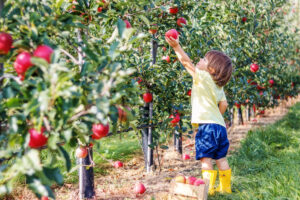 Tried-and-True Potty Training Tips to Ease Your Child’s Transition.
Tried-and-True Potty Training Tips to Ease Your Child’s Transition.
(StatePoint) Kids grow up fast. While some transitions are bittersweet, most parents are happy to say goodbye to diapers when the time is right. However, potty training can be frustrating for both parents and kids without an understanding of the process. Knowing your child’s unique needs is important, say experts.
The top three most important factors in deciding what potty training method to use are — that it helps kids become independent, teaches potty training skills, and allows kids to set their own pace, according to a recent online survey of 1000 parents of toddlers conducted by Edelman Berland, commissioned by Kimberly-Clark.
“Your child’s readiness depends on both physical and psychological factors,” says Dr. Heather Wittenberg, Pull-Ups brand potty training partner and child psychologist who specializes in the development of babies and young children. “Remember, every child is an individual. So don’t get stressed about your training pace.”
To help families with the process, Wittenberg is offering some tried-and-true potty training tips.
Getting Started
Potty training usually starts around age two, but there is no correct age to begin. Watch out for signs of readiness.
If your child is dry after naps, uncomfortable in soiled diapers and is showing increased interest in the bathroom, he or she may be ready to potty train. Additionally, your child may start asking to wear “big kid” underwear.
Independence
“You can foster independence right from the start with the help of tools that enable learning, such as training pants and potty seats,” says Wittenberg. “Giving kids control inside and outside of the bathroom is key to increasing cooperation over the long run and helping them overcome the psychological hurdles of potty training.”
In fact, seven out of ten parents think training pants give parents and toddlers more potty training independence, according to the same Edelman Berland study.
For example, Pull-Ups training pants feature stretchy sides that teach toddlers how to take their training pants off and put them back on by themselves. The easy-open sides make it a breeze for parents and child to check for the need for potty breaks.
The Right Attitude
A healthy attitude will make all the difference. Ignore setbacks and negative behavior and try to maintain a neutral reaction instead. Your disapproval will only create more negativity. By motivating your toddler and acknowledging every step, the whole family can enjoy the process and it won’t feel like a chore.
Use Resources
There is a wealth of potty training information available for both parents and toddlers. Additionally, check out online resources that are tailored to your child’s needs. For example, Pull-Ups Big Kid Academy features a suite of learning tools, tips for handling setbacks and interactive games to help with the process. To enroll and get a personalized dashboard complete with potty training activities and expert advice customized to your point in the journey, visit www.Pull-Ups.com.
Potty training is an exciting milestone in a child’s life. Understand the process so you can make the learning experience more enjoyable and set your child up for success from the beginning.




